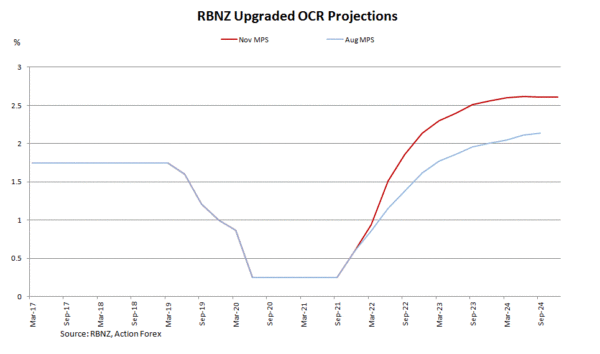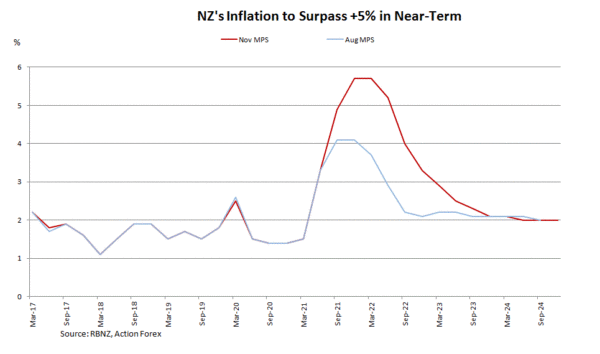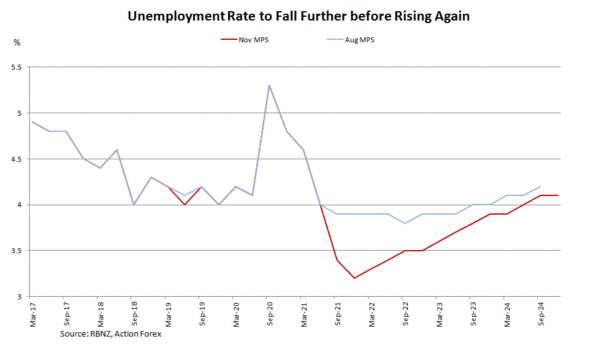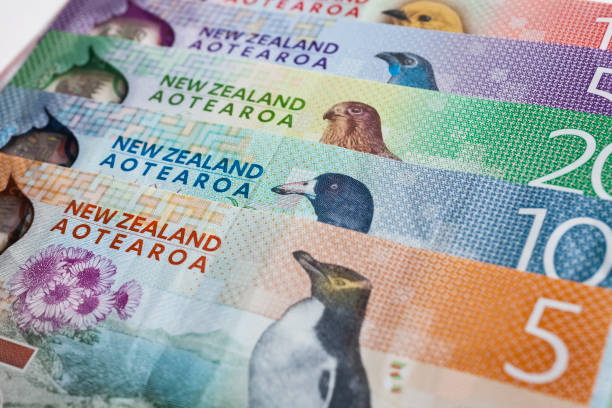Products You May Like
The RBNZ raised the OCR by +25 bps to 0.75%, as we had anticipated. Policymakers sounded more cautiously about the economic outlook while reiterating the stance of continued reduction of stimulus. Kiwi extended recent correction after the announcement.
On the monetary policy outlook, the central bank reiterated that “it remains appropriate to continue reducing monetary stimulus so as to maintain price stability and support maximum sustainable employment” and that “further removal of monetary policy stimulus is expected over time given the medium term outlook for inflation and employment”. More importantly, it “judged that considered steps in the OCR were the most appropriate way to continue reducing monetary stimulus for now”.
As we mentioned in the preview, the RBNZ can achieve some sorts of tightening by revising its OCR forecast. The accompanying statement revealed that the policy rate could reach 2.1% by end-2022 and then to 2.6% by end-2023 and into 2024. While the RBNZ maintained its assessment of the neutral rate of around 2%, the minutes noted that “conditional on the economy evolving as expected, the OCR would likely need to be raised above its neutral rate”.
Policymakers sounded more cautious about the economic outlook than previously. They acknowledged that the pace of global economic growth “has ebbed… due to the elevated uncertainty created by the persistent COVID-19 virus”. At home, they warned that the pandemic “will become more widespread geographically” and that “household spending and business investment will be dampened in the near-term by these ongoing health uncertainties”. The uncertainties could increase as the New Zealand government begins to reopen it borders early next year.
On inflation, the staff projected that it would overshoot above +2% sustainably until late 2023 before coming back towards 2% in 1H24. Near-term inflation is expected to rise above +5%. Policymakers continued to attribute the strong inflation to transitory factors. As noted, “the near-term rise in inflation is accentuated by higher oil prices, rising transport costs and the impact of supply shortfalls. These immediate relative price shocks risk generating more generalized price rises given the current domestic capacity constraints”. Meanwhile, the central bank acknowledged that “employment is now above its maximum sustainable level”. Moreover, “a broad range of economic indicators highlight that the New Zealand economy continues to perform above its current potential”. The staff projections showed that the unemployment would drop further to 3.2% in 4Q2021, before gradually increasing to 4.1% over coming years.
Meanwhile, the central bank acknowledged that “employment is now above its maximum sustainable level”. Moreover, “a broad range of economic indicators highlight that the New Zealand economy continues to perform above its current potential”. The staff projections showed that the unemployment would drop further to 3.2% in 4Q2021, before gradually increasing to 4.1% over coming years.

